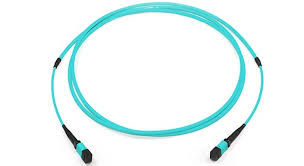HOW DO YOU CHOOSE THE BEST USB CABLE FOR YOUR REQUIREMENT?
- Shannon Oberholtzer
- Jul 1, 2020
- 4 min read

Universal Serial Bus (USB) was developed in the 1990's in a bid to simplify the relations between computers and peripheral devices. It has come to be popular because of its compatibility with several platforms and operating systems, its reduced cost of implementation, and its simplicity of usage. Most machines that are constructed now come with different USB interfaces. These are the port of choice for many homes and workplace peripherals such as cameras, printers, modems, and mobile storage devices. USB criteria is developed and preserved by an industry body known as the USB Implementer's Forum (USB-IF). In its first specification, USB cable described just two connector types: A and B. Revisions to the specification and needs on producers have expanded the width of connectors utilized for USB devices, but the vast majority of USB products use the A and B connector ports. USB is supposedly universal. However, there are many diverse kinds. As it turns out, they serve various functions, mainly to maintain compatibility and support new devices.
So, how do you choose a USB cable according to your needs? Here’s a USB cable guide to help...
USB – A Type:
Found on server controllers in hubs and computers. The A-style connector has a flat, rectangular port. This interface holds the connection set up by friction which makes it rather simple for customers to connect and disconnect. Instead of pins, the connector utilizes horizontal contacts which can withstand continuous attachment and removal well. The A-socket jack provides a “downstream" link that is intended for use only on host controllers and hubs. It isn't intended for use as an “upstream" jack onto a peripheral device. This is vital since a host controller or hub is designed to offer 5V DC electricity on one of the USB hooks. A-A wires are utilized to connect USB devices using an A-style Female port to your PC or another USB device, and for data transfer between two systems.
USB – B Type:
The B-style connector is designed for USB peripheral devices. The B-style port is squarish in shape and has marginally beveled corners around the top ends of the connector. Such as the A connector, it utilizes the friction of the body to stay in place. The B-socket is an “upstream" connector that cannot be used with anything except peripheral devices. Because of this, the majority of USB programs require an A-B cable.
USB – C Type:
This is one of the most reliable USB cables. The USB-C or even USB Type-C jack is the newest USB connector available on the marketplace. The USB-C connector includes a reversible/symmetrical layout and may be plugged to any USB-C apparatus using either end. Even a USB-C cable is capable of transporting USB 3.1, USB 3.0, USB 2.0, and USB 1.1 signs. The USB-C is often paired with all the USB-A, USB-B, USB Micro-B, along with other USB connectors while encouraging previous versions of the USB specification. USB-C could be adapted to utilize all these old connectors. When linking two USB 3.1 apparatus, the USB-C cable may support data transfer speeds which are double the rate of existing USB technologies (around 10Gbit/s), increased power delivery up to 20 amps, five amps, along with 100 watts for charging and power.
Micro USB A & B:
The connection is readily identified with its white-colored receptacle and streamlined five pin layout. Also, popularly known as USB-IF. This charger is located on newer mobile devices like cell phones, GPS units, PDAs and digital cameras. It supports the top speed transfer speed of 480 Mbps and On-The-Go capabilities. With Micro USB B, the only difference is that it can be identified as a black-colored receptacle.
Micro USB AB:
Designed only for USB On-The-Go apparatus, this flexible connector may take either a Micro-USB A or Micro-USB B cable link. This port is readily identified with its grey-colored receptacle and streamlined five pin layouts.
USB Mini-b (5-pin & 4-pin):
One main disadvantage to the B-style jack is the size, which measures, nearly, half inch on each side. This created the B-style port unsuitable for several compact personal digital devices like PDAs, digital cameras, along with cellphones. Because of this, many device makers started the miniaturization of both all USB connectors for this Mini-b. This 5-pin Mini-b has become the most popular kind of Mini-b connector, and also the only one known from the USB-IF. The 4-pin Mini B is found in many digital cameras.
USB 3.0 A-Type:
The USB 3.0 connector is made for USB Super-Speed software, it is going to transmit data from reduced rate links, and it's backwards compatible with USB 2.0 interfaces. USB 3.0 A straps are usually blue to help distinguish them from the preceding versions. Called "Super-Speed". This A-style connector is often found on server controls in hubs and computers; the A-style connector is a horizontal, rectangular port. This interface retains the connection set up by friction and makes it easy for consumers to connect and disconnect.
It becomes easier to choose the USB cable you need, when you know the differences. But, with TechnaCable, you need not worry, as we can help you pick the best USB cable for your needs.







Comments